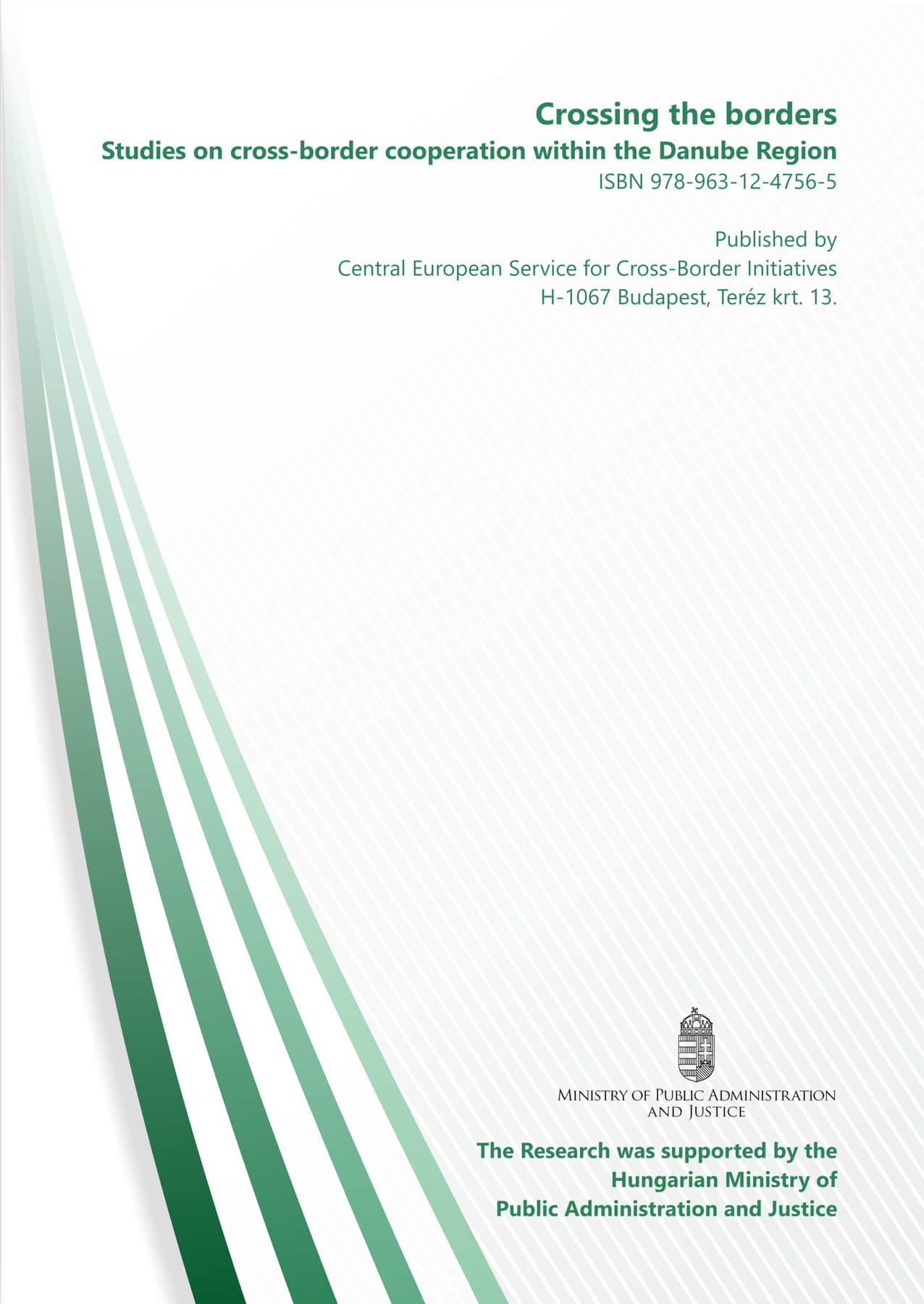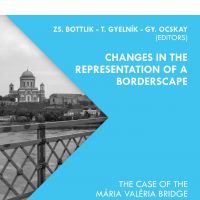
Information
- Territory: Central and Eastern Europe
- Year of publication: 2015
- Type: Research
- Language: English
- ISBN 978-963-12-4756-5
You can download all the studies at once (40 MB) from the link below, but each study can be downloaded separately as well after their introductory texts.
Greetings from Rudolf Schicker
(Priority Area Coordinator 10 of the EU Strategy for the Danube Region)
Greetings from István Joó
(Ministerial Commissioner for the Danube Region Strategy, Ministry of Foreign Affairs and Trade, Hungary)
SECCo1: Crossing The Borders – Studies
Our SECCo research project fits into the Action Plan of the EU Strategy for the Danube Region (EUSDR). The Road Map of the Priority Area 10 (Institutional capacity and cooperation) of the EUSDR included the exploration of best practices and the sharing of examples of cross-border cooperation in the Danube area. The research was made in the framework of an international partnership, in which we worked together with Bulgarian, Czech, Croatian, Romanian, Serbian and Slovakian partners. The analysis of the areas along the border was carried out quantitatively with statistical data, on the level LAU1 and LAU 2 level of the European Union’s statistic list. After this, the analysis of the cross-border cooperation was carried out by CESCI and its partners separately in an independent way, although based on a common thematic. Every participant examined two cross-border cooperation structures that are active on the territory of the given country, with qualitative methods, mainly by interviews, and then they summarised the results, information in the form of case studies. As a result of the research a unified database was also prepared, that can be accessed after registration.
Downloadable studies
Foreword. Acknowledgments. Introduction, content, research design and methodology.
Central European Service for Cross-Border Initiatives (Hungary)
Gyula Ocskay
Péter Balogh
Márton Pete
Part One: Comprehensive Analysis
Geographic and Structural Characteristics of Cross-Border Cooperation in the Danube Region
Central European Service for Cross-Border Initiatives (Hungary)
Márton Pete
Teodor Gyelník
A classification of the cross-border cooperation initiatives of the Danube Region
Central European Service for Cross-Border Initiatives (Hungary)
Teodor Gyelník
Gyula Ocskay
Márton Pete
Central European Service for Cross-Border Initiatives (Hungary)
Péter Balogh
Teodor Gyelník
Part Two: Case Studies
Superna Ltd (Croatia)
Andrea Vugrinović
Andrej Dominko
Danube-Kriş-Mureş-Tisza Euroregion
Institute of Geography, Romanian Academy (Romania)
Ines Grigorescu
Monica Dumitraşcu
Mihaela Sima
Dana Micu
Regional Science Association (Serbia)
András Ricz
Imre Nagy, PhD
Anna Csiszár Molnár
Superna Ltd (Croatia)
Andrea Vugrinović
Andrej Dominko
Institute of Spatial Planning (Slovakia)
Július Hanus
Ľubomír Macák
Pavol Petrík
Oliver Rafaj
Central European Service for Cross-Border Initiatives (Hungary)
Roland Hesz
European Institute of Cross-Border Studies (Hungary)
Márton Pete
Institute of Spatial Planning (Slovakia)
Július Hanus
Ľubomír Macák
Pavol Petrík
Oliver Rafaj
Institute of Geography, Romanian Academy (Romania)
Bianca Mitrică
Monica Dumitraşcu
Gheorghe Kucsicsa
Diana Dogaru
Sofia University “St. Kliment Ohridski” (Bulgaria)
Assoc. Prof. PhD Kosyo Stoychev (Team leader)
PhD Student Miglena Klisarova (Expert)
PhD Student Vasil Zarkov (Expert)
Regional Science Association (Serbia)
András Ricz
Imre Nagy, PhD
Anna Csiszár Molnár
Šumava – Bayerischer Wald/Unterer Inn – Mühlviertel
Institut EuroSchola (Czech Republic)
Hynek Böhm PhD
Jaroslav Dokoupil
Milan Jeřábek
Institut EuroSchola (Czech Republic)
Hynek Böhm PhD
Jaroslav Dokoupil
Milan Jeřábek
Sofia University “St. Kliment Ohridski” (Bulgaria)
Assoc. Prof. PhD Kosyo Stoychev (Team leader)
PhD Student Miglena Klisarova (Expert)
PhD Student Vasil Zarkov (Expert)
